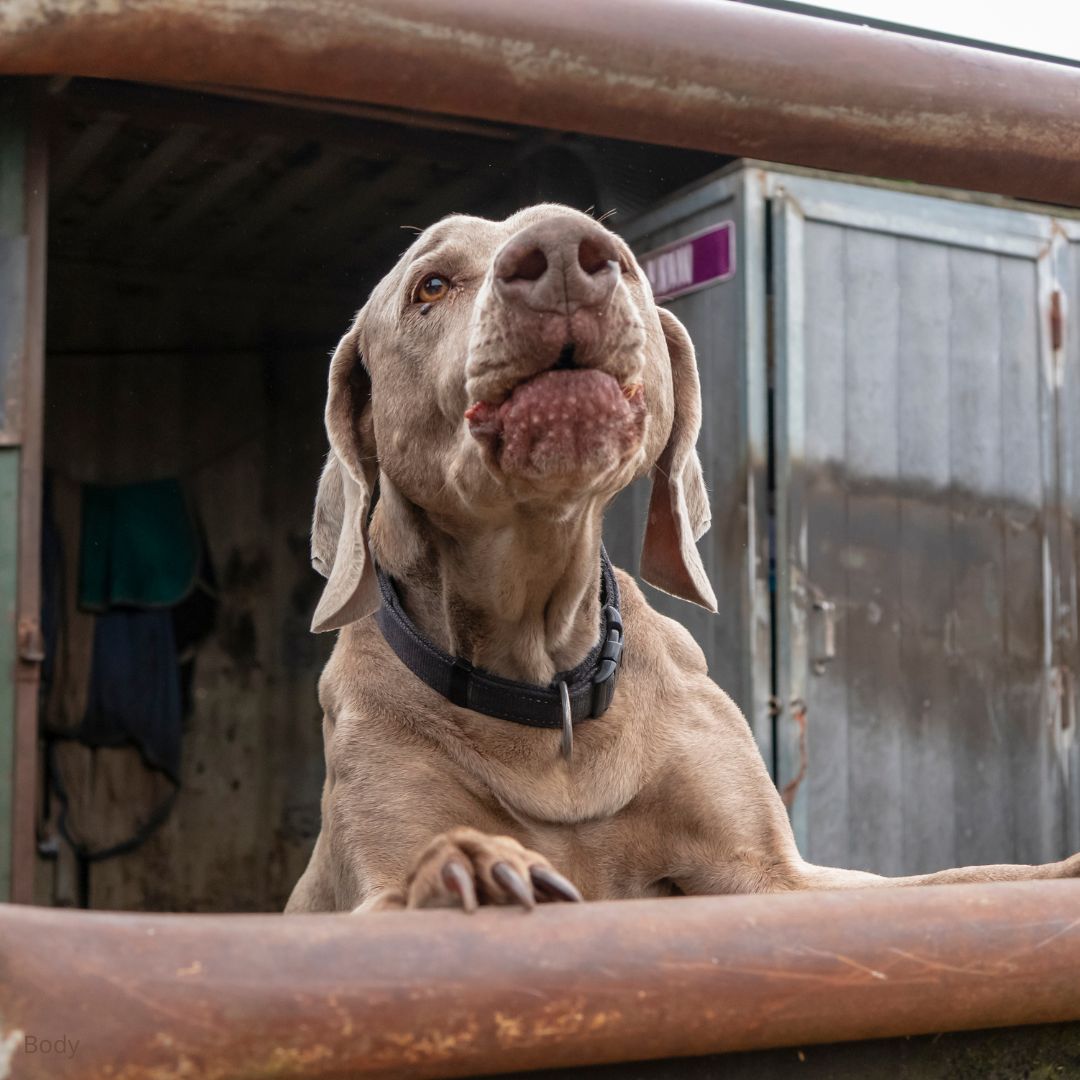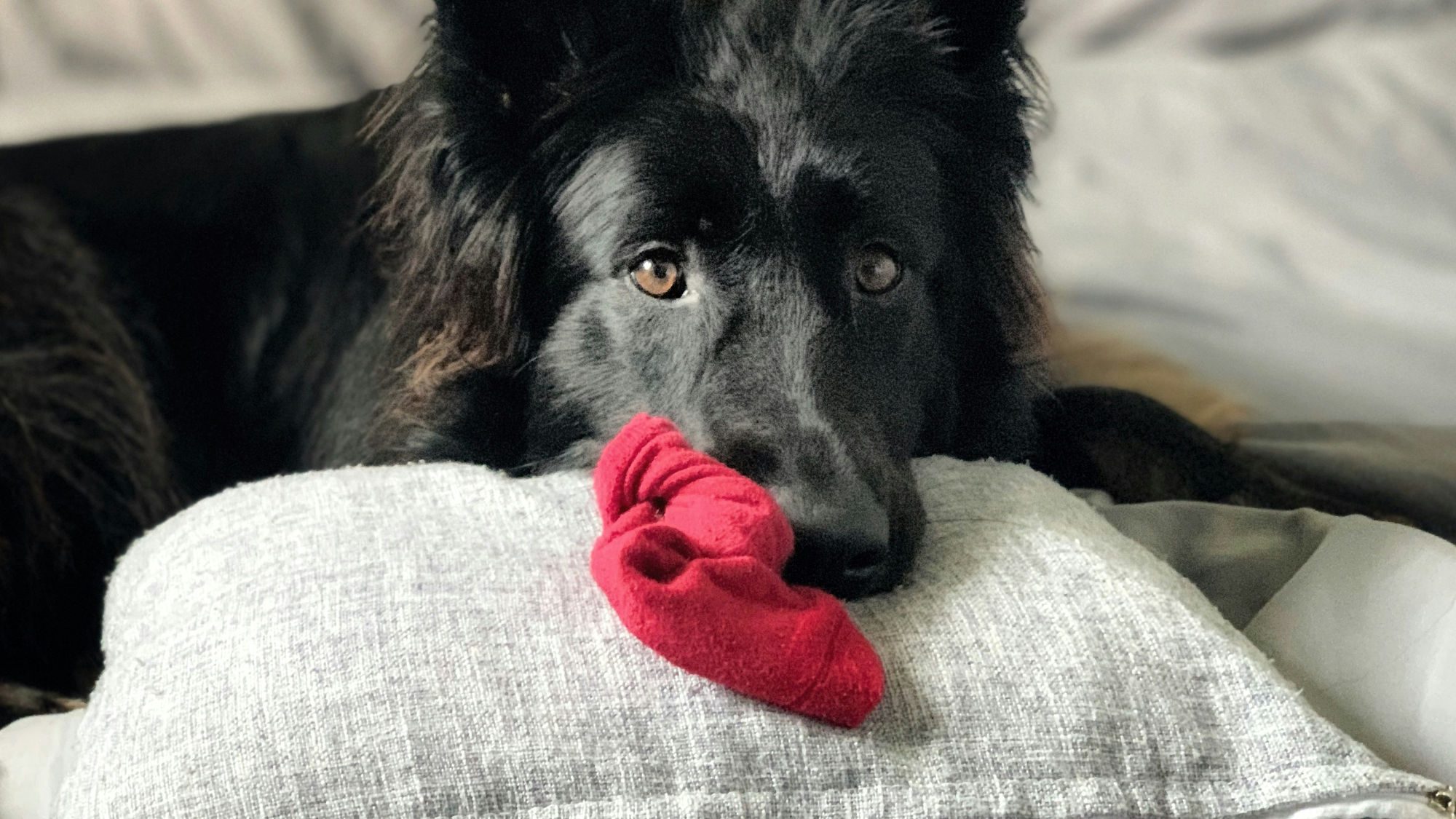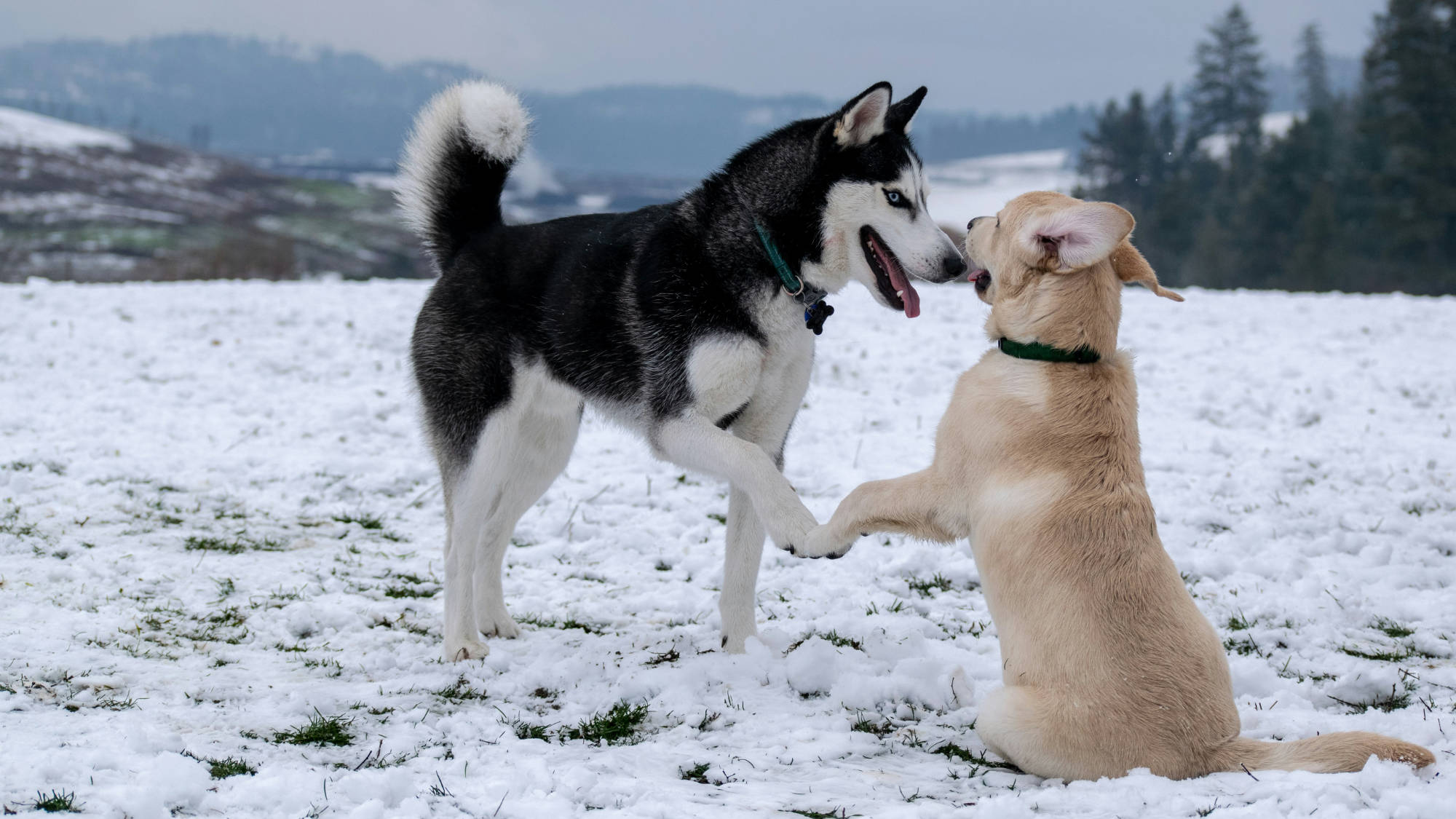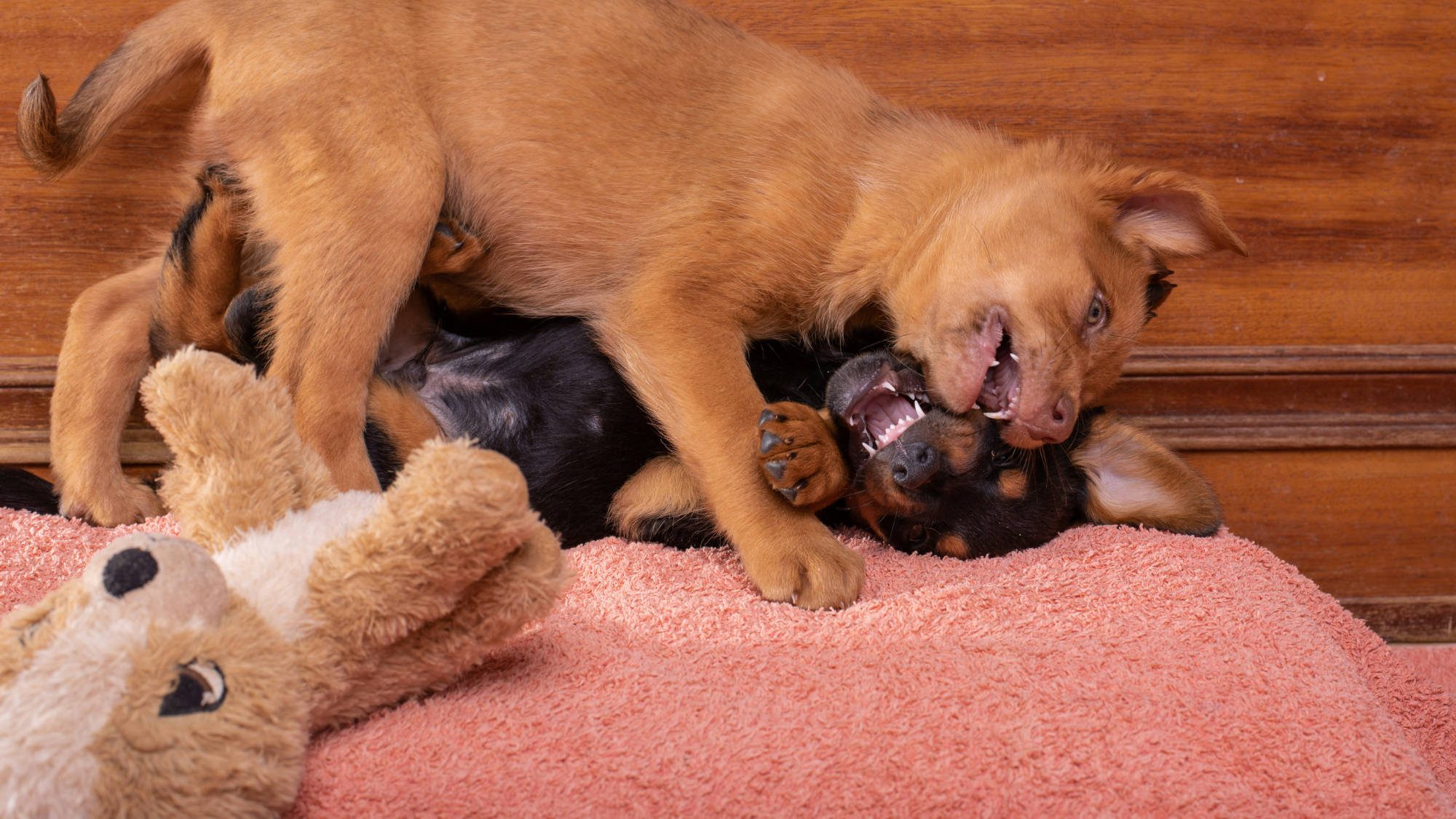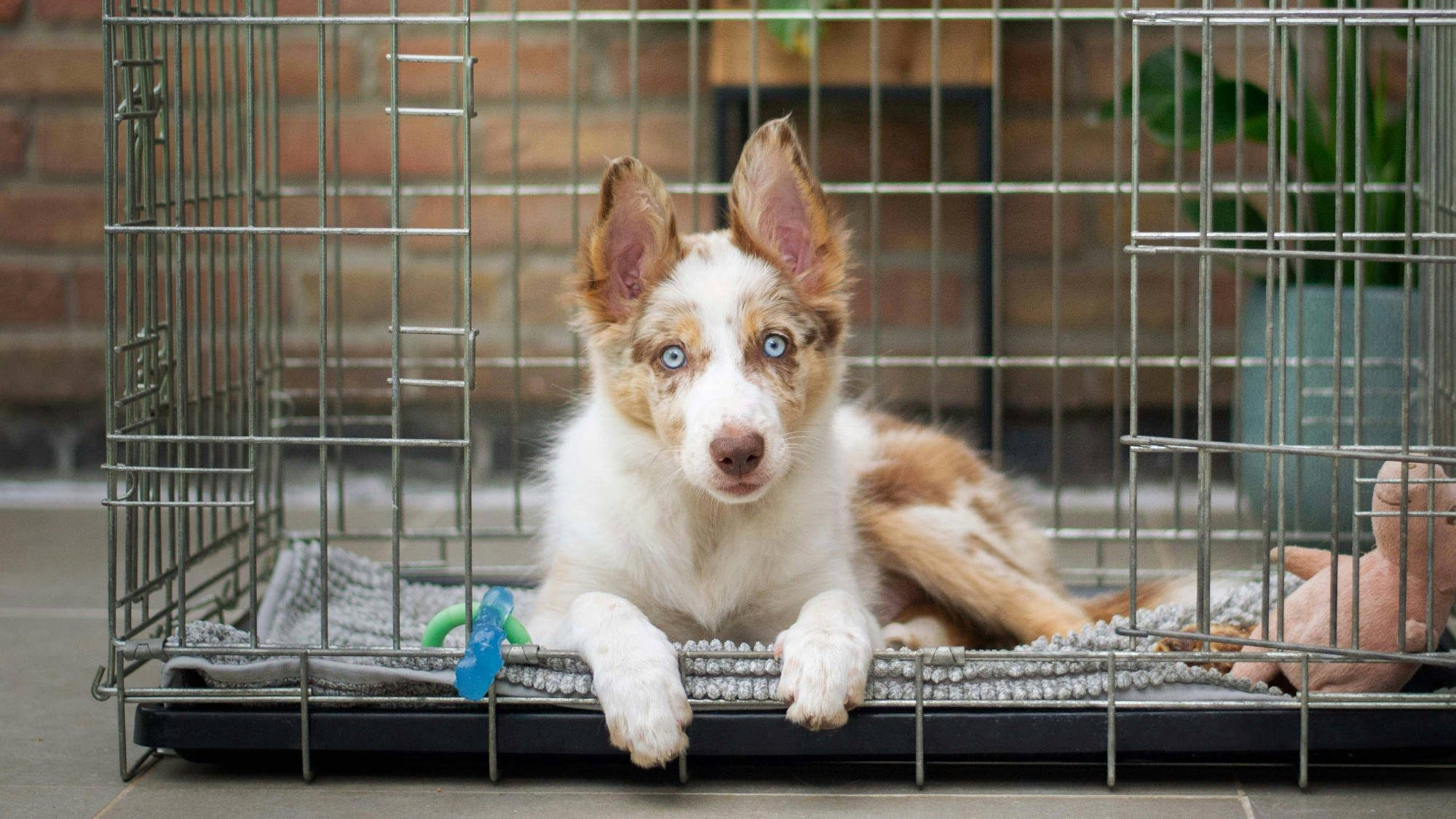Bringing Calm to Canine Reactivity- Understanding and Solutions
Have you ever been on a walk with your pup on a leash, only for them to suddenly be lunging, barking and snapping at the sight of another dog? If so, you’ve had a front seat to ‘dog-to-dog reactivity’. But what causes this behavior?
At home, your dog is the perfect companion, your snuggly sidekick on movie night and an Olympic baller during fetch sessions, great with the kids and the grandparents, yet, interactions with other dogs can draw out a demon.
Here we’ll look at the reasons behind these canine outbursts and find ways to disable the explosion.
Ready to address and manage dog-to-dog reactivity?
Table of Contents
- Bringing Calm to Canine Reactivity- Understanding and Solutions
- What is Dog-to-Dog Reactivity?
- The Science Behind Reactivity
- The Role of Adult Dogs
- Encouraging Desired Behavior
- Understanding the Reality of Reactive Dogs
- Effective Use of Stimulus Blocking Techniques in Dog Training
- Encouraging Good Behavior in the Presence of Other Dogs
- Bringing it All Together
What is Dog-to-Dog Reactivity?
Dog-to-dog reactivity is a frequent behavioral challenge, especially in young and lively canines. This term describes an intense reaction towards other dogs, which can manifest as loud barking, lunging, or seeming aggressive. However, these behaviors are usually not rooted in aggression. They often stem from fear, excitement, or a lack of social skills.
Reactive dogs are not inherently problematic; they simply require guidance to better manage their feelings when interacting with other dogs. Learning to recognize and address reactivity can greatly improve your bond with your furry friend.
The Science Behind Reactivity
Just like humans, dogs have specific triggers that can provoke a strong response. However, dogs express themselves mainly through body language and vocal sounds. To understand why certain dogs react intensely in the presence of others, we need to explore dog psychology, focusing on their natural instincts and the impact of their surroundings.
Learning to understand a dog’s body language and vocal warnings can assist in identifying what sets off these reactions and empower you to better manage and reduce your dog’s reactivity. By addressing these underlying causes, you can help your dog feel more secure and behave more calmly in various situations.
Ever wonder why your pup overreacts to other dogs? It’s not always aggression but fear or excitement. Understanding their reactivity can strengthen your bond. Learn about canine body language and vocalizations for a happier and simpler pet life
The Role of Adult Dogs
Older dogs are indispensable in guiding younger pups in proper canine behavior. They serve as role models, showcasing how to engage peacefully with other dogs. This influence is especially valuable when a young puppy is meeting new canine friends.
A well-mannered adult dog sets a positive example, allowing puppies to learn correct behaviors through observation. Studies have shown that puppies who witness calm behavior in older dogs are less likely to display fear or aggression themselves. This observational learning is a crucial component in the social development of young dogs.
Impact on Puppies
The behavior of an adult dog significantly shapes how a puppy responds in different scenarios. When an adult dog stays calm during interactions with other pets, it provides a behavioral template for the puppy to emulate.
This dynamic is backed by scientific research, which indicates that puppies observing composed older dogs are less likely to exhibit fear or aggression in similar situations. This modeling effect plays a vital role in the social and behavioral development of young dogs.
Ensuring Respectful Interactions
Dogs rely on body language and vocal signals to communicate, making respectful interactions vital. A firm yet gentle correction from an older dog can quickly teach a boisterous puppy when they’ve gone too far.
By allowing older dogs to naturally guide younger ones, we can foster a harmonious environment where all dogs thrive and learn to interact positively with each other.
Have you observed how your adult dog’s behavior shapes your puppy’s actions? Much like children, puppies learn by watching adults. Maintaining calm and respectful interactions is key to ensuring peaceful coexistence.
Encouraging Desired Behavior
When it comes to dog training and addressing dog-to-dog reactivity, the focus is often on teaching the correct behaviors rather than punishing the wrong ones. Let’s explore how this approach is effective.
The Power of Praise in Dog Training
Praising your dog for good behavior can be more effective than relying solely on food treats. This method not only reinforces positive actions but also deepens the bond between you and your pet. Reward-based training exemplifies this approach.
A 2004 study revealed that dogs trained with rewards were more obedient, while those subjected to punishment exhibited more behavioral issues.
The Importance of Tone in Dog Communication
The tone of your voice significantly impacts your dog’s understanding and response. Dogs are incredibly perceptive and can pick up on your emotions and corrections through tonal variations.
A study indicates that dogs respond best to commands given with the right intonation. Therefore, it’s essential to not only speak clearly but also to use a positive and encouraging tone. The goal is to create an environment where tails are wagging with happiness, not tucked in fear.
The Benefits of Positive Reinforcement in Dog Training
- Motivating Learning: Rewards incentivize dogs to learn by linking good behavior with positive experiences.
- Strengthening Bonds: Consistent positive reinforcement helps to deepen the connection between you and your pet.
- Reducing Stress: Opting for rewards over punishment lowers stress levels by removing fear and anxiety from the training process.
Using praise instead of punishment revolutionizes dog training. Dogs who receive positive reinforcement exhibit improved behavior, and even the tone of our voice can impact their reactions. Let’s aim for happy, wagging tails rather than fearful, tucked ones.
Understanding the Reality of Reactive Dogs
Reactive dogs frequently receive undeserved negative reputations. However, their behavior doesn’t stem from being “bad” dogs. Instead, they are reacting to their environment in the only way they know how.
Consider this analogy: Imagine you’re terrified of thunderstorms, and suddenly you hear a loud clap of thunder right above you. Your immediate reaction would likely be one of fear and startle. This isn’t misbehavior; it’s a natural response to a perceived threat. Similarly, when our dogs react to other dogs, they are simply responding to their environment in the only way they know how.
Reactivity Isn’t Always Aggression
Often, a dog’s reactive behavior towards other dogs is driven by fear or over-excitement rather than aggression. We can assist them by fostering positive associations with other dogs and teaching alternative behaviors using reward-based training techniques.
If we only focus on correcting reactive behavior without recognizing positive actions, we risk perpetuating the misconception that these dogs are always problematic, which is not accurate.
Recognizing Positive Behavior in Reactive Dogs
It’s important to remember that reactive dogs aren’t constantly “reacting.” Throughout the day, they often exhibit commendable traits such as loyalty and affection, but these positive moments can be overshadowed by occasional reactive episodes.
By acknowledging and rewarding their good behavior, we not only boost their confidence but also encourage more positive interactions with other dogs.
Reactive dogs aren’t “bad”; their behavior is often driven by fear or excitement rather than aggression. By recognizing and rewarding positive behavior, and implementing reward-based training techniques, we can effectively support and guide them.
Effective Use of Stimulus Blocking Techniques in Dog Training
Stimulus blocking techniques are needed for managing dog-to-dog reactivity. These techniques help shift your dog’s focus towards you, reducing the chances of overexcitement when other dogs are nearby.
When implemented correctly, stimulus blocking provides a positive alternative to hyperactive or inappropriate behavior. By guiding your dog’s attention back to you, they are less likely to react negatively to other canines.
Using the Sit Command to Establish Focus
Teaching your dog to sit and maintain eye contact on command (Sit + Watch) is a straightforward yet effective stimulus-blocking technique. In situations such as meeting new dogs or navigating crowded environments like dog parks or vet offices, asking for a ‘sit’ and ‘watch’ holding their gaze can help maintain calmness. The AKC’s guide offers valuable tips for perfecting this skill.
This method not only curbs reactive behavior but also strengthens obedience training, ensuring your dog responds to commands even in stressful situations. Patience is crucial, as it may take some time to see noticeable results.
Giving Your Pet a Greater Purpose
Elevating your dog’s training beyond basic commands can help them achieve a larger goal: remaining calm and composed around other animals. The ASPCA suggests that this can be accomplished through consistent positive reinforcement during exposure sessions, where good behavior is generously rewarded and negative reactions are immediately corrected with verbal cues.
Using reward-based training strengthens the bond between pets and their owners, creating a trusting and positive environment. This trust helps your dog feel more secure, reducing the chances of reactive behavior.
Harness the power of stimulus-blocking techniques and how they can transform dog-to-dog reactivity into calm, controlled interactions. By emphasizing obedience and positive reinforcement, these methods can significantly improve your dog’s behavior.
Encouraging Good Behavior in the Presence of Other Dogs
As a responsible dog owner, it’s important to recognize and reward your dog for displaying good behavior around other dogs. This approach helps address reactive tendencies. By acknowledging moments of calm and respectful interaction, we reinforce and promote positive actions.
The Power of Verbal Praise
Using verbal praise is a powerful method to reduce reactivity in your dog. By consistently affirming “good job” during calm interactions with other dogs, your pet learns that this behavior is desirable.
Additionally, your tone of voice plays a crucial role—dogs can sense our emotions through our vocal cues. Therefore, ensure your praise is upbeat and encouraging to reinforce positive behavior effectively.
Emphasizing Positive Behavior in Dogs
It’s easy to overlook, but your dog spends most of the day behaving well. Owners often concentrate on correcting negative behaviors, missing the many moments of good conduct. The American Kennel Club recommends focusing more on praise than scolding to create a balanced perspective.
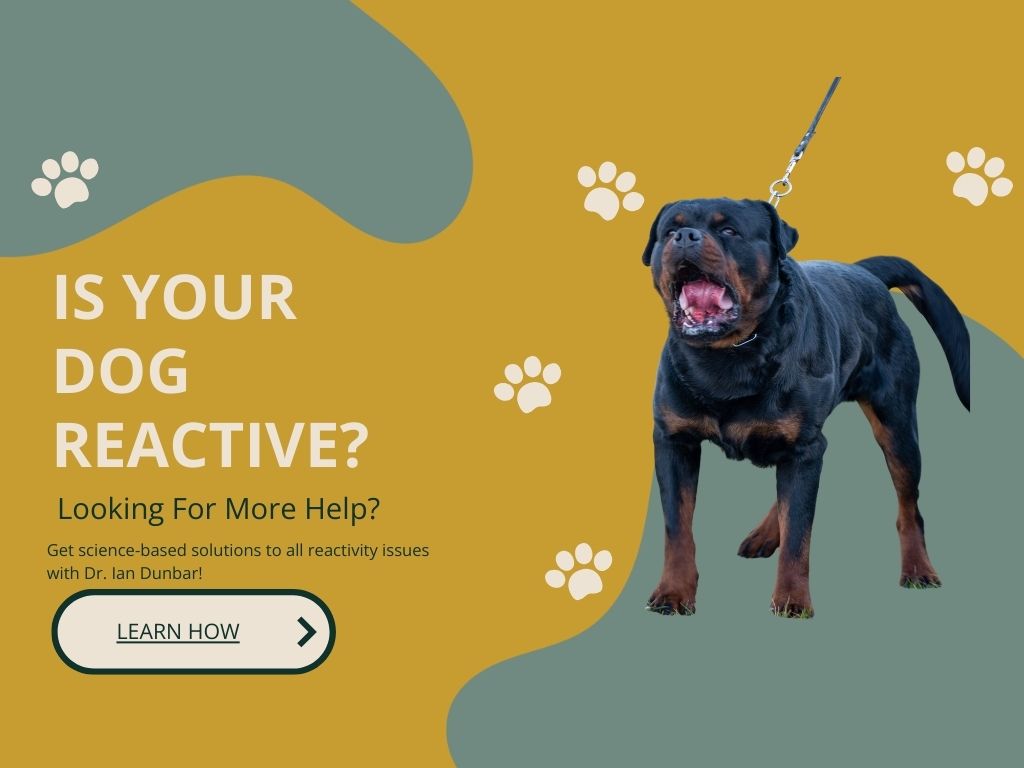
Bringing it All Together
Managing dog-to-dog reactivity doesn’t have to be an uphill battle. With understanding, patience, and the right techniques, you can transform reactive moments into peaceful interactions. Remember, praise over punishment is your mantra. Adult dogs serve as role models, and stimulus-blocking techniques can be used wisely.
Most importantly, recognize and reward your dog’s good behavior. This journey towards calm canine interaction will highlight what makes our dogs such wonderful companions: their loyalty, joyfulness, and unending love.



